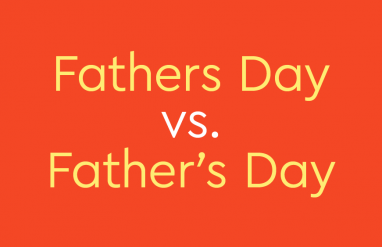Every sentence uses transitive verbs and/or intransitive verbs. But what makes a verb transitive or intransitive? As it turns out, it all depends on how you use the verb.
In this article, we will explain what transitive and intransitive verbs are, how they can be used in the passive voice, and provide example sentences that show how we typically use transitive and intransitive verbs.
⚡ Quick summary
A transitive verb is used with a direct object and can be used in the passive voice. An intransitive verb is not used with a direct object and can’t be used in the passive voice.
Transitive vs. intransitive verbs
A transitive verb is a verb that is used with a direct object. A direct object in a sentence is a noun or pronoun that is receiving the action of the verb, meaning that it is having an action performed on it. For example, the sentence Monkeys eat bananas uses the transitive verb eat and the direct object bananas. The direct object bananas tells us what the monkeys ate.
Conversely, an intransitive verb isn’t used with a direct object. For example, the sentence Fish swim uses the intransitive verb swim. There is no direct object in this sentence. The fish didn’t perform the action of swimming on another object, so swim must be an intransitive verb.
It is possible for the same verb to be a transitive or intransitive verb depending on the sentence. The presence or absence of a direct object will tell you if a verb is transitive or intransitive. For example:
Intransitive verb: Professors teach. (No direct object)
Transitive verb: Professors teach students. (Students is the direct object)
Because linking verbs use subject complements (a word or phrase that describes or is identified with the subject) and not direct objects, they are typically considered to be intransitive verbs. For example, the verb is is an intransitive (linking) verb in the sentence This book is great. The word great describes the book.
Using the passive voice with transitive and intransitive verbs
Besides direct objects, the other main difference between transitive and intransitive verbs has to do with the passive voice. First, what is the passive voice?
The passive voice is, basically, a “backwards sentence.” A verb is in the passive voice when the subject of a sentence or clause is acted on rather than performing an action. For example, the sentence The dinner was cooked by Eduardo uses the passive voice. In this sentence, the subject (the dinner) did not do anything. Instead, it was acted on: Eduardo cooked it.
Essentially, passive voice takes what would normally be a direct object and turns it into a subject. You could say Eduardo cooked the dinner (dinner is the direct object), but the dinner instead is used as the subject when the sentence is in the passive voice.
This being the case, transitive verbs can be used in the passive voice and intransitive verbs cannot. For example:
- Transitive verb, active voice: Jessica plays basketball.
- Transitive verb, passive voice: Basketball is played by Jessica. (Sounds awkward, but makes sense)
- Intransitive verb, active voice: The children laughed.
- Intransitive verb, passive voice: Were laughed by children. (Doesn’t make any sense)
A more in-depth explanation on why intransitive verbs can’t be used in the passive voice can be found in our full article on intransitive verbs or the passive voice.
Learn more about the difference between active and passive voice.
Examples of transitive and intransitive verbs used in a sentence
Now that we have taken a look at what transitive and intransitive verbs are, here are some examples that show how we typically use them in sentences.
Transitive
- We always eat breakfast early in the morning.
- I was stung by a bee.
- She studied the worksheets thoroughly.
Intransitive
- We always eat early in the morning.
- Bees sting if they are provoked.
- She studied for her graduate exam.














